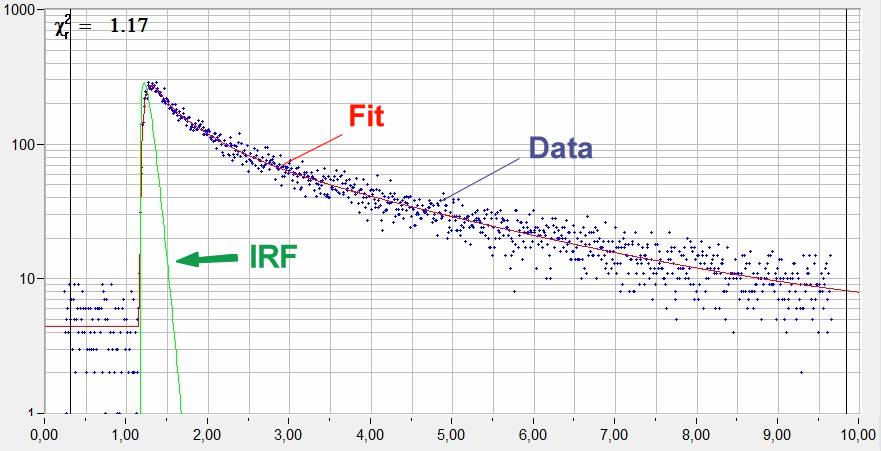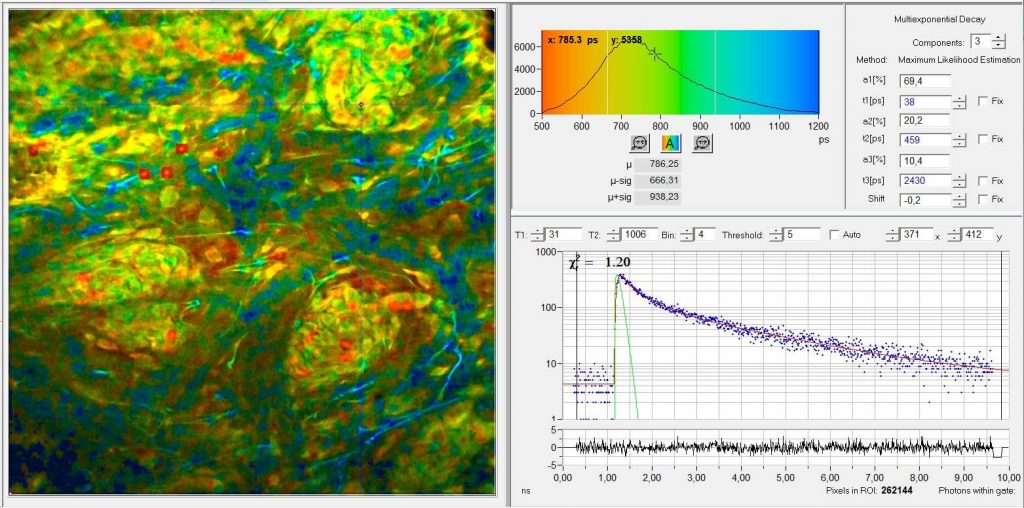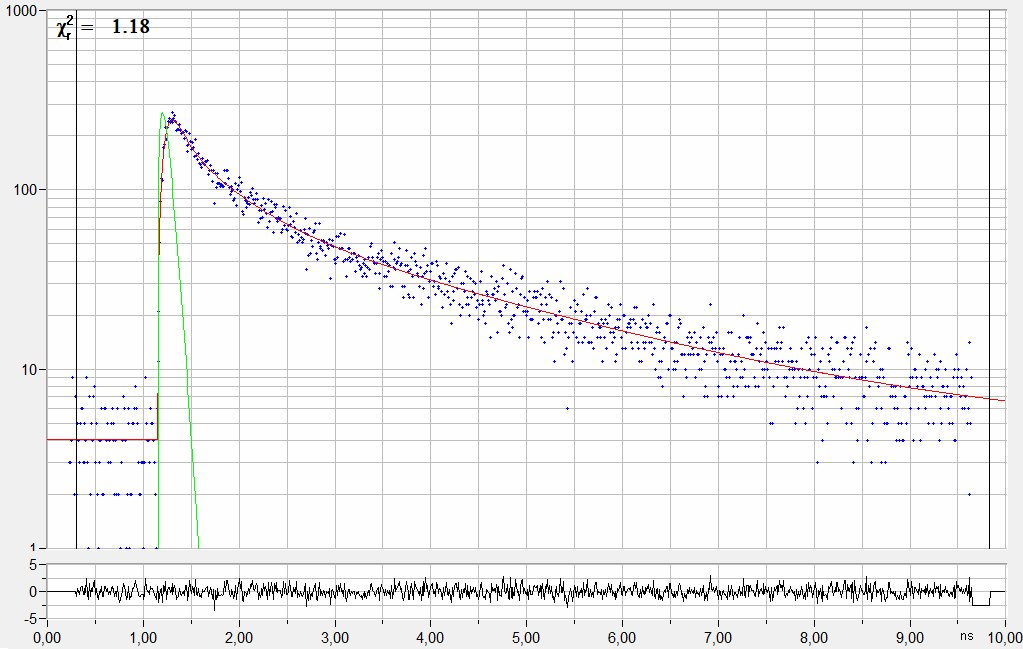The measurement of the temporal instrument-response function (IRF) of a FLIM system is distracting, time consuming and, because of the lack of ultra-fast fluorescence decay processes, often not possible at the required accuracy level. bh’s SPCImage NG data analysis software therefore extracts the IRF from the FLIM data themselves. To do so, it models the detector IRF by a function IRF(t) = t/t0 exp(t/t0). The function closely resembles the transit-time distribution of all commonly used hybrid detectors. The parameter t0 is obtained by fitting the convolution of IRF(t) with the selected decay model to the measured decay data within a selected image area (Fig. 1). An IRF with the obtained t0 is then used to analyse all pixels of the image (Fig 2). The fits obtained with the synthetic IRF are so good (Fig. 2, lower right) that IRF recording for precision FLIM analysis is no longer necessary.
For details please see SPCImage NG chapter in The bh TCSPC Handbook, 8th ed. (2019).



